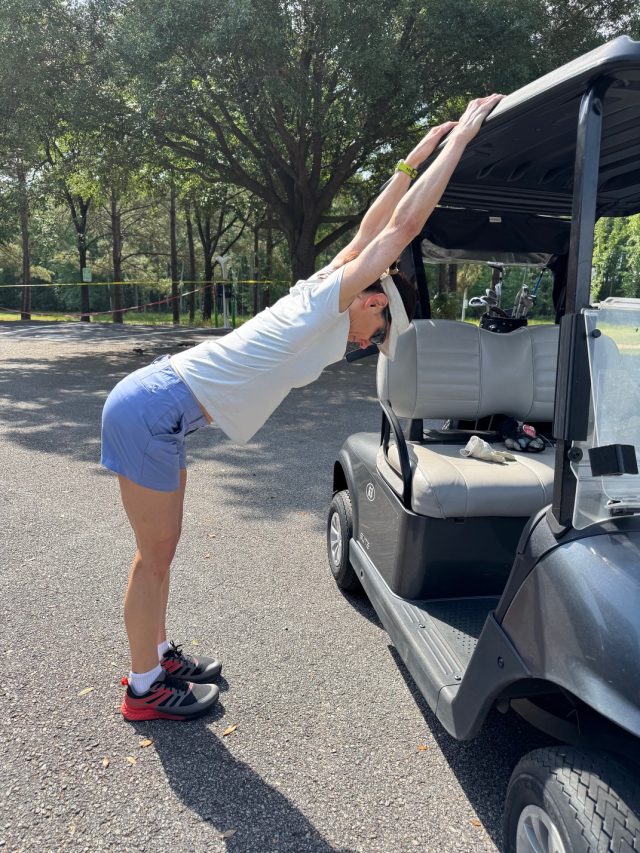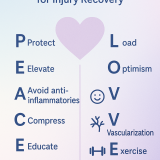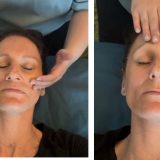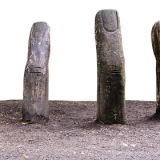Swimming 101 by Tonya Tittle Energy Fitness trainer Memphis
Swimming can be relaxing & a great cardio workout once a person feels comfortable in the water and not gasping for air. If you are new to swimming and wondering where to get more information so you can incorporate it into your fitness regimen then this article is for you.
Why should you listen to me? I was introduced to swimming for fitness in high school in 1989 by a fellow track member that was also a swimmer. I participated in swimming for one year and only did freestyle & backstroke. For me, swimming was great cross training for cross country and track. I was pretty terrible looking back because as soon as I arrived at college swimming was one of my courses for my degree. My teacher said my form was terrible and often there was the teacher and the athletic trainer correcting my form at the same time. We worked on all the strokes and had to pass at certain proficiency level. After I learned the right way I really took it to the next level and became certified as a lifeguard and American red cross swim instructor in which I taught kids during the summers at a local pool. After graduate school I became the Physical Director at a YMCA which required me to become a certified lifeguard instructor and the Y swim instructor certification. I had to supervise instructors making sure they were teaching correctly. My days of regular instruction pool side are past and now I use my passion for swimming participating in triathlons and cross training and doing articles like this to help others.
I’m going to break this article into equipment, terminology, breathing, form, warm-ups/stretches, nutrition and workouts. Strokes discussed will be freestyle also known as front crawl, backstroke, breast stroke, side stroke and briefly discuss treading water.
Equipment
I like to get some equipment at either swimoutlet.com or speedousa.com
Swim Suit: ladies get a fitness suit as swimming in a bikini just doesn’t work. Men: if comfortable try getting the mid-thigh spandex or boy shorts that are fitted to create less drag.
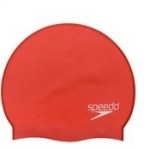 Cap (silicone or latex) Worried about your hair color? While taking a pre-swim rinse off make the water luke-warm to chilly as to not open the hair follicles. Next put a little conditioner in your wet hair to help keep the pool chemicals from soaking in your hair and stripping your color.
Cap (silicone or latex) Worried about your hair color? While taking a pre-swim rinse off make the water luke-warm to chilly as to not open the hair follicles. Next put a little conditioner in your wet hair to help keep the pool chemicals from soaking in your hair and stripping your color.
Ear plugs: I just buy regular ones from any drugstore and put in before doing the pre-swim rinse off (not the wax or swim specific ones as they are sub-par for me and actually hurt my ears). Just squeeze them out and let them dry to reuse several times.
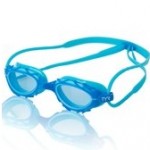 Goggles: get an anti-fog and if you are swimming outdoors get a sun reflective pair. I prefer the suction silicone goggles instead of the foam gasket ones. I also prefer the individual eye goggles as to the mask as it’s disorienting for me to use a mask. Personal preference is key here for you to get most enjoyment from swimming. Prescription goggles are available as well.
Goggles: get an anti-fog and if you are swimming outdoors get a sun reflective pair. I prefer the suction silicone goggles instead of the foam gasket ones. I also prefer the individual eye goggles as to the mask as it’s disorienting for me to use a mask. Personal preference is key here for you to get most enjoyment from swimming. Prescription goggles are available as well.
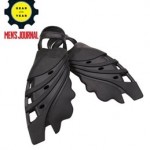 Fins: these are great for developing leg strength, improving stroke and kick as well as gets you through water faster breaking up the monotony of swimming. If I swim a mile then I use the fins for about 10-15 laps of combined kickboard, freestyle and backstroke & breast stroke.
Fins: these are great for developing leg strength, improving stroke and kick as well as gets you through water faster breaking up the monotony of swimming. If I swim a mile then I use the fins for about 10-15 laps of combined kickboard, freestyle and backstroke & breast stroke.
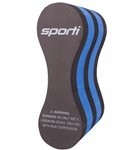 Pull buoy is a flotation device placed between your upper thighs while you drag your legs and don’t kick. This is great used early in your lap swimming workout to help you get into good arm stroke form for the rest of your freestyle laps.
Pull buoy is a flotation device placed between your upper thighs while you drag your legs and don’t kick. This is great used early in your lap swimming workout to help you get into good arm stroke form for the rest of your freestyle laps.
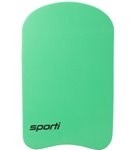 Kickboard: these are great for holding during different kicks to improve your form and can be used as a break to catch your breath between full body strokes.
Kickboard: these are great for holding during different kicks to improve your form and can be used as a break to catch your breath between full body strokes.
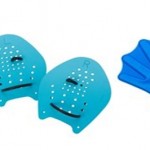 Hand webs or paddles: I personally don’t like to use these but many swimmers do to help their stroke and use resistance for their laps. Use caution if you have shoulder issues and if you don’t have a good stroke or try to power through strokes with bad form and fast as you may develop shoulder issues if done wrong. Search internet for instructional videos.
Hand webs or paddles: I personally don’t like to use these but many swimmers do to help their stroke and use resistance for their laps. Use caution if you have shoulder issues and if you don’t have a good stroke or try to power through strokes with bad form and fast as you may develop shoulder issues if done wrong. Search internet for instructional videos.
Watch: either time your workouts or go by laps. Tracking will help keep you motivated and inspired.
Water bottle: I fill mine with water and L-Glutamine for energy and muscle recovery.
Music: there are water proof headphones and players.
Post workout shake: important for recovery within 30 minutes post all workouts
Pre-nutrition/supplements: want to burn fat? Don’t eat carbs before workout. Get some amino acids and coconut water if you can bear the taste (it has a 4 to 1 ratio of potassium to sodium).
Pre-workout warm-up / stretches: check out this to my video Dynamic Warm up https://youtu.be/UjFLRu7hgZg
Shampoo/ conditioner: swim specific shampoo is helpful to keep the pool chemicals from weighing your hair down and blondes to keep from turning green.
Wetsuit: (if you’re going to compete in open water swims)
Terminology
Length is the distance from one end of the pool to the other
Lap is the distance from one end of the pool to the other AND back to your starting position
Distance– some pools are measured in yards and some are in meters. In general just over 18 laps is about ½ mile and 1 mile is 35 laps.
How do I keep up with how many laps or length I’ve done?
I previously used lots of kickboards to count laps before I had fins and just move one over after every 5 laps until several times I noticed while I was in the middle of a lap another swimmer would grab one of my boards not knowing I was using them to count. That messed with my relaxation aspect of swimming so had to find a new method.
Now, I like to count every five as my mind wanders when I’m swimming so 5 works for me and I don’t want to pause swimming any more frequently to track. I have 7 objects that I stack in a pile and after every five laps I move one to the left or right depending on my mood for the day. This counts out 35 laps. If I swim 1.5 miles then that means all by objects move to a new pile to the right and when I have completed 5 laps past 1 mile then I move another object to the left. (FYI…my objects are shoe, shoe, pull buoy, water bottle, fin, fin, kickboard).
I’ve seen other swimmers push the lane rope buoys towards the side of the pool marking their laps.
Turn: the transition of how to turn around when reaching the end of the pool and return to the other end smoothly. I will only discuss two turns for this article. An open turn is when 1 or both hands touch the wall in combination with both knees pulling towards your chest as you rotate your body to use your feet touching the wall to power squat off the wall towards the other end of the pool in a glide underwater position. An open turn is usually for breast stroke & butterfly. A flip turn is when you do a front somersault when you are just about arms length from the pool wall. This one is a bit more complicated and not a swimming 101 article teaching point. Search for some flip turns on the internet.
Catch: this is the point at which the stroke begins after a glide. On the freestyle this is when the hand enters the water overhead and in line with the midline of your body.
Pull: this is the middle position for strokes and should be smooth. This the point for inhaling air for both the breast stroke and freestyle.
Finish: the position your hands are in (outside your thigh on freestyle & backstroke). This is where the power of your stroke comes from; however, beginners usually think it’s the catch phase.
Propulsion: comes from a good catch, pull and push. It means you go further on each stroke as you are propelling yourself forward better.
Low drag comes from a good body position, a straight body and an effective kick. Low drag means you go further on each stroke because you slip through the water more easily. This is a good factor in a long stroke.
A glide in the stroke means you pause and wait a while before performing the next stroke, gliding a bit further off the last stroke. When you add an element of glide into your stroke you introduce a pause which unless you have great timing and rhythm will not be an energy saver as you may think. Remove the glide, don’t decelerate between strokes and it’ll feel easier and you’ll be faster.
Pullout: This is used to travel 5-10 yards under water after the wall push off and before getting past the flags. It is important to be as streamline as possible during this pre-glide phase.
Flags: these are the flags usually located 5 strokes away from each end of the pool.
Lane ropes: these divide the lanes
Timing clock: sometimes found on the side of the pool and great for timing your intervals or rest breaks
Line at bottom of pool: this is great to help you swim straight. If you are sharing the lane looking at it helps you to swim between the lane rope and the outside of the line.
Short course (for 25 meter or 25 yard pools): the lane buoys change color at the 15 meter mark.
T at the end of the swim straight line: this helps alert swimmers the end of the lane is less than 5 meters away and usually when swimmer is atop of the T denotes a good time to tuck into a flip turn.
Starting blocks: these are what experienced swimmers or swim team participants use to start all races except for the backstroke in which case is started with the swimmer in the water holding the side of pool or the handles located under an official starting block.
Efficiency of stroke: typically a good stroke rate more info on this check out http://www.swimsmooth.com/strokerate.html#ixzz3zi7c2qmO. Count how many arm strokes it takes you to swim one length. A rate of 22-26 is within acceptable range for low drag and higher efficiency.
Other videos to see strokes: https://youtu.be/5HLW2AI1Ink (Speedo international)
http://www.virtual-swim.com/3d_mv/top_btn/back/3d_q_back.html
Fingers: keep them together and in fact a little scooped or cup like
Sharing lanes & Swim etiquette: when trying to get the attention of a swimmer in which you wish to share the lane and they do not see you trying to get their attention it is acceptable to place a kickboard between the swimmer and the wall to get their attention when the swimmer is about 7-10 yards away from the wall. Ask to share the lane and if they want to same side swim or circle swim. It is not acceptable to circle swim when one swimmer is clearly faster or slower than another. Stay at least one body length behind the swimmer ahead of you.
Strokes & Form
Freestyle also known as front crawl is regarded as the fastest of the four front primary strokes. It is one of two long axis strokes, the other one being the backstroke. A flutter kick is used with this stroke.
Breaststroke is performed face down in the water without rotating the torso. The arms stay in the water and move synchronously, while the legs perform a whipkick. It is possible to keep the head elevated out of the water throughout the stroke, although the head usually dips in and out.
Backstroke also known as back crawl. Similar to the front crawl, but done while lying on the back. One arm reaches behind the head with a pinky finger tip entry while the other arm is by the side. I do old school version and have thumb exit water and rotate wrist quickly to enter water above head with pinky. Tips for tracking straight..1) look towards your feet at end of pool 2) cut your eyes to one side so you can see a lane rope 3) if covered pool look at ceiling and stay on one side of beam or other sighting point.
Sidestroke is performed on the side, pull the water as if with a rope with arms going out and stopping in the middle, while ensuring that the strokes are most hydrodynamic when moving towards the desired location, and pushing the most water when moving away from the location. In addition, the legs are performing a scissors kick, which is like breaststroke kick, but sideways.
Breathing – When should I breathe?
Take your pick depending on your fitness level and comfort level, speed and the stroke you are doing. When doing freestyle stroke keep your head in water enough that your eyebrows are below waterline but always be looking ahead with chin tilted toward direction you are swimming.
Freestyle: 1) Every stroke breathing all on one side (try breathing on your right side going to one end and your left side returning 2) Every third stroke breathing alternates breathing on your right and left as you travel to the ends of the pool 3) Every forth stroke breathing requires that you breathe on same side each time. This is great when using the pull buoy for breath control. I don’t recommend the forth stroke breathing for beginners or people that don’t have a great cardio base as it doesn’t offer your body enough air for you to keep good timing and rhythm.
Breast stroke breathing you lift your head every stroke and breathe or every other stroke. Kickboard breathing can be done either with your head looking straight ahead or with your head turned sideways with your ear resting on your outstretched arm during the freestyle kick.
Sidestroke breathing is easy as you will have one ear in the water and your face and mouth not in the water but slightly directed forward and up.
Open water swimming breathing: search the internet as this is not for discussion in this article.
Treading water: is in the water head up and feet down. Different kicks, such as the eggbeater kick also known as the rotary kick, and hand movements are used to stay afloat. This is useful to keep the head out of the water for a better view or to catch an object as for example in water polo. A slow and wide scissor kick can be used as well.
6 SWIMMING WORKOUTS
(lap counts equal half-mile to total mile just double to get to 35 laps)
For a pdf version of this article including these workouts click here.
How long should it take me to do these workouts? When racing freestyle I can complete a mile in about 26 minutes doing flip turns as they are faster. I have tested myself swimming a mile not racing to see the difference and it’s usually about 35 minutes but still with flip turns. So depending on your level of comfort in your strokes, length of rest breaks and your level of fitness the half-mile swim workouts should range from 20-30 minutes. When you progress to swimming a mile or just 3/4 of a mile plan on being in the pool around 50 minutes or less.
Can’t workout on site? Check out Energy Fitness online subscription for only $9.99/month or $109/year
(over 500 exercise video demonstrations & pictures, follow along workouts,
printable workouts, nutrition video recipes & much more.)
Workout 1
3 laps Freestyle easy
3 laps Freestyle with pull buoy easy
3 laps Freestyle sprints 1 length (rest at end 30 seconds) will total 6 lengths
3 laps Kickboard – Backstroke flutter kick
3 laps Kickboard-Freestyle (sprint down 1 length and easy back)
3 laps Backstroke – easy first lap, sprint 2nd lap and easy last lap
Workout 2
5 laps Freestyle moderate
3 laps Backstroke fast
3 laps Kickboard- free or back flutter(1 length fast & 1 length slow)
5 laps Freestyle down sprint & Backstroke back slow to recover
2 laps side stroke
Workout 3
3 laps Freestyle easy
10 laps Freestyle sprint (down and back rest 1 minute between)
3 laps Flutter kick freestyle
2 laps Freestyle sprint
Workout 4
10 laps Freestyle moderate
2 laps Breast stroke easy
2 laps Back stroke moderate
2 laps Freestyle sprint
2 laps Back stroke easy
Workout 5
5 laps Freestyle easy
5 laps Freestyle pull buoy (sprint length and easy recover back)
5 laps Freestyle (sprint length and easy Breast stroke recover back)
3 laps Backstroke kickboard (moderate to easy)
Workout 6
2 laps Freestyle easy
2 laps Freestyle pull buoy
2 laps Freestyle sprint
2 laps Freestyle kickboard moderate
4 laps Backstroke sprint
1 lap Side stroke easy
5 laps alternate between freestyle, backstroke, breast stroke, freestyle and backstroke
Not a client? Live in town and interested in our personal training or nutrition coaching? Click here for a FREE Consult (value $87) or give us a call at 901-466-6242
Check out our customized online training ($40-$80) here: Online Customized Training
Interested in our Massage or Body Wraps? Click here.
Energy Fitness, 552 South Main Street, Memphis, TN 38103

